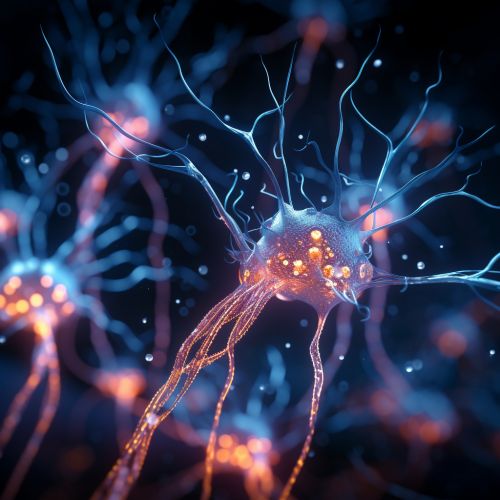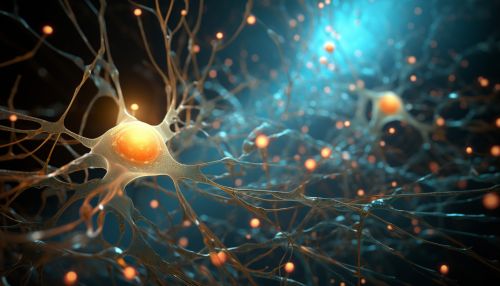Neurotransmitter
Introduction
Neurotransmitters are endogenous chemicals that enable neurons to communicate with each other across synapses. They are key components of the body's nervous system, playing crucial roles in the transmission of signals in the brain and throughout the body.
Classification
Neurotransmitters can be broadly classified into two categories: small molecule neurotransmitters and larger neuropeptides. Small molecule neurotransmitters include molecules like acetylcholine, serotonin, and dopamine. Neuropeptides include larger molecules like endorphins and enkephalins.


Function
Neurotransmitters function to transmit signals across a synapse from one neuron to another 'target' neuron, muscle cell, or gland cell. They are released from synaptic vesicles in synapses into the synaptic cleft, where they are received by neurotransmitter receptors on the target cells.
Mechanism of Action
The mechanism of action of neurotransmitters is quite complex and involves a series of steps. These steps include synthesis, storage, release, receptor binding, and inactivation.
Synthesis
Neurotransmitters are synthesized from simple precursors, often an amino acid, through enzymatic processes. For example, the neurotransmitter serotonin is synthesized from the amino acid tryptophan.
Storage
Once synthesized, neurotransmitters are stored in vesicles in the axon terminal of the neuron. When an action potential reaches the axon terminal, it triggers the release of the neurotransmitter into the synaptic cleft.
Release
The release of neurotransmitters is triggered by the arrival of an action potential at the axon terminal. This causes the synaptic vesicles to fuse with the cell membrane and release their contents into the synaptic cleft.
Receptor Binding
After release, neurotransmitters diffuse across the synaptic cleft and bind to specific receptors on the target cell. This binding can either stimulate or inhibit the target cell, depending on the type of receptor and neurotransmitter.
Inactivation
After a neurotransmitter has performed its function, it is either taken back up into the neuron that released it, a process known as reuptake, or it is broken down by enzymes and removed.
Role in Disease
Abnormalities in neurotransmitter function can lead to a variety of diseases and disorders. For example, a deficiency in the neurotransmitter dopamine is associated with Parkinson's disease, while an excess of dopamine is associated with schizophrenia.
Research and Future Directions
Research into neurotransmitters continues to be a vibrant field, with new discoveries and insights regularly emerging. Future directions for research include the development of new drugs that can target specific neurotransmitter systems, as well as the exploration of the role of neurotransmitters in diseases not traditionally associated with the nervous system.
